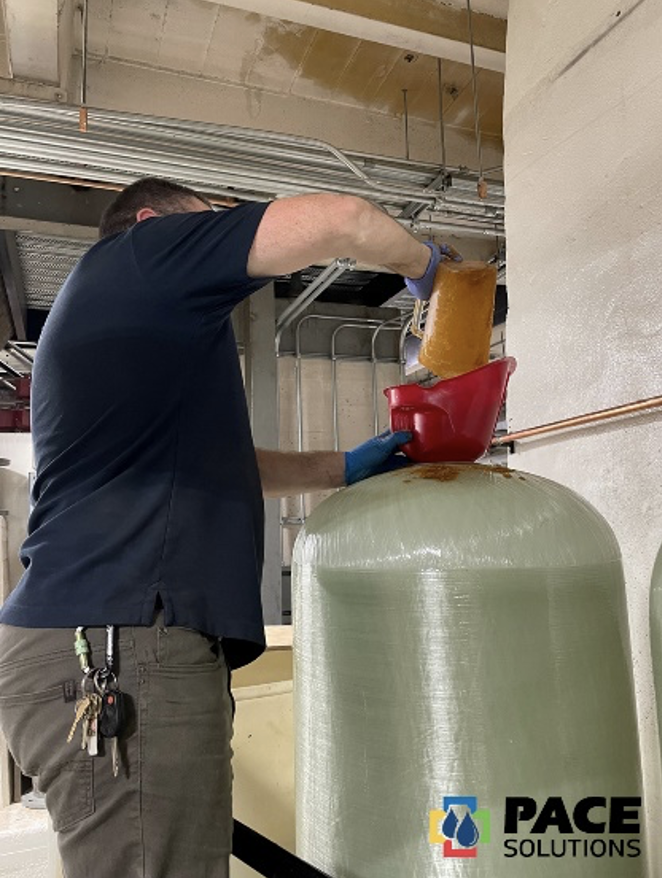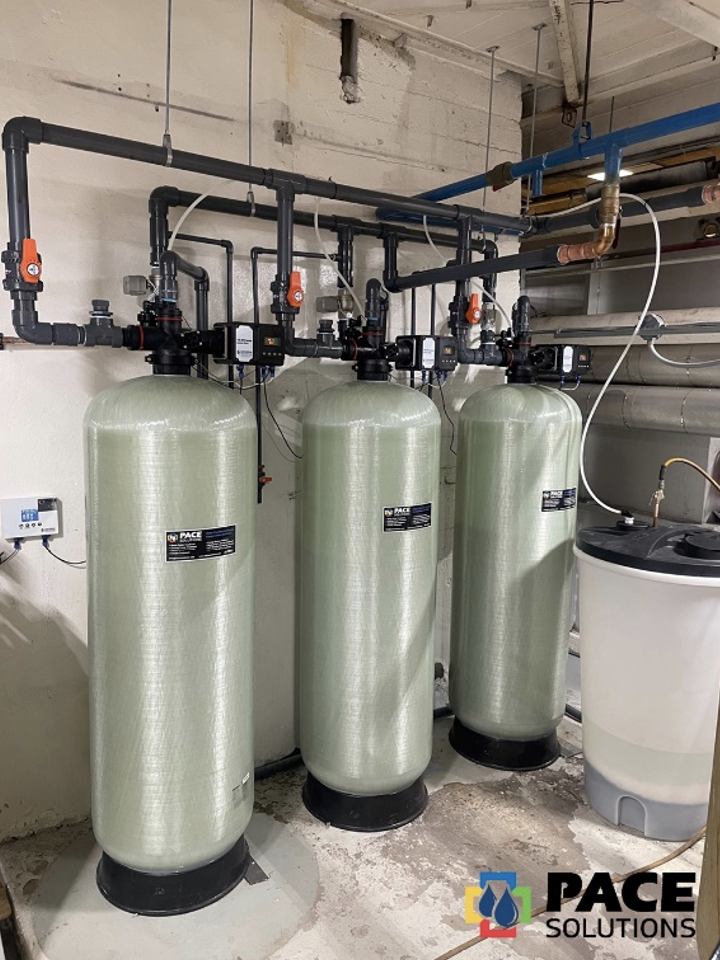Raising Efficiency and Lowering Costs of Commercial Water Softeners
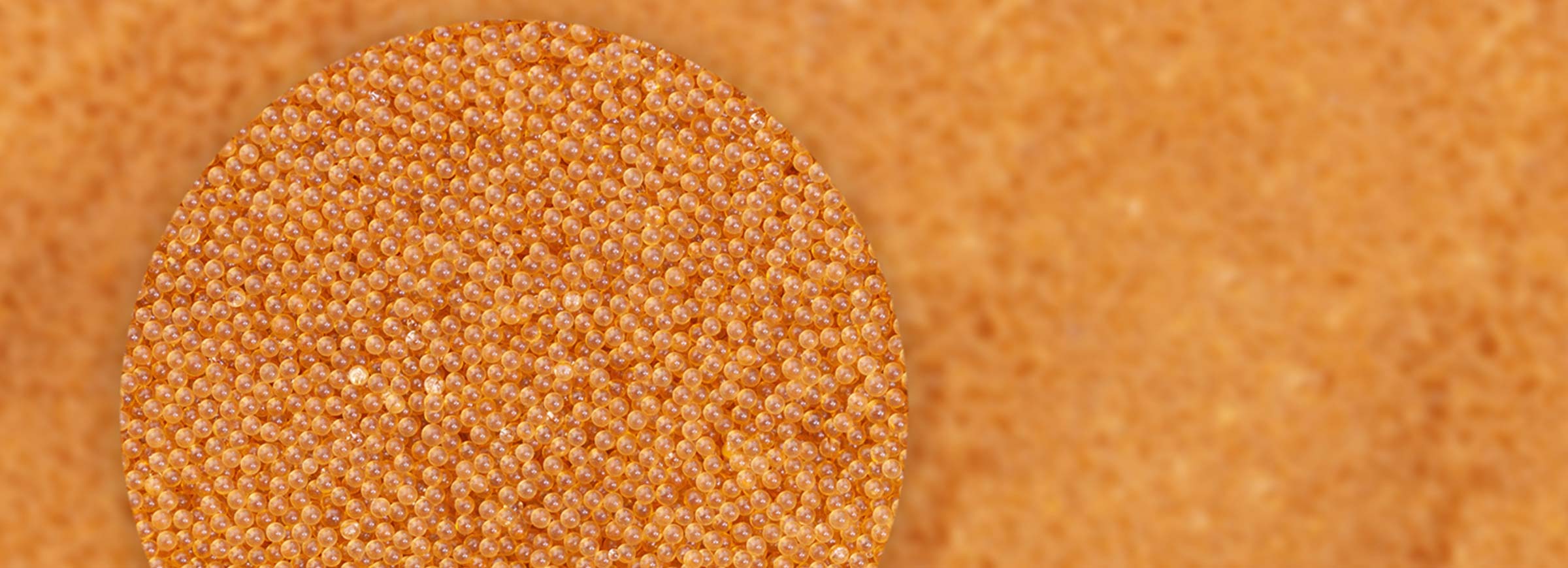
Many parts of Canada can have high water hardness levels, sometimes more than 700 mg/L. It is a nightmare for many people to deal with hard water. The presence of hard water can lead to scale formation, which creates inefficiencies in boilers, cooling towers, and heat exchangers. Moreover, it reduces soap and detergent performance, causes plumbing issues, increases energy costs, and negatively impacts many industrial processes. Among the different methods for reducing water hardness, such as reverse osmosis, chelation, and distillations, we have found that water softening using ion exchange resin systems is often the most cost-effective.
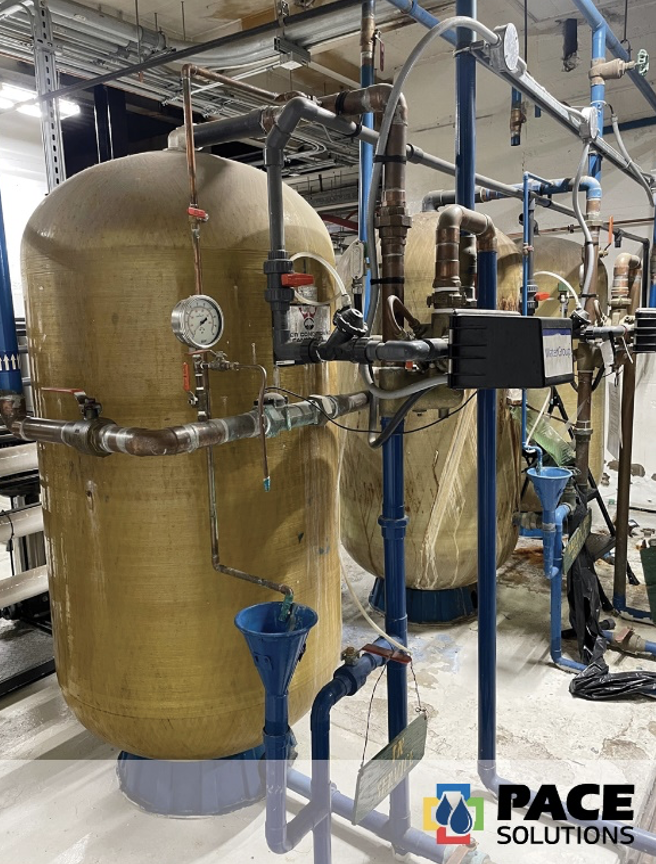
In addition to being very effective at removing water hardness, ion exchange water softeners are also capable of running continuously. This is especially true if they are equipped with automatic regeneration abilities. Furthermore, it occupies less floor space than systems such as reverse osmosis and distillation and without the energy inputs.
How is water softened?
Calcium and magnesium ions are commonly responsible for water hardness, either as carbonate salts or bicarbonate salts, depending on the pH.
Millions or even billions of tiny resin beads are inside the water-softening system. Resins are made from polystyrene, the same polymer that makes up Styrofoam.

The reason these resin beads don’t look/feel like Styrofoam is because the polymer chains are interlocked with something called divinylbenzene (DVB). Imagine a cable that is very long and that is shaped into a ball by wrapping part of it in cable ties. This ball-shaped polystyrene chain contains multiple negatively charged exchange sites. When the resin beads are fully recharged, those sites are filled with sodium ions (Na+). Water containing magnesium and calcium ions forces the sodium off the resin beads when it flows through them since magnesium and calcium ions have a higher charge (+2) than sodium ions. In this way, the resin beads capture the water’s hardness and soften it. The resins will need to be regenerated when all the exchange sites are taken up by magnesium and calcium.
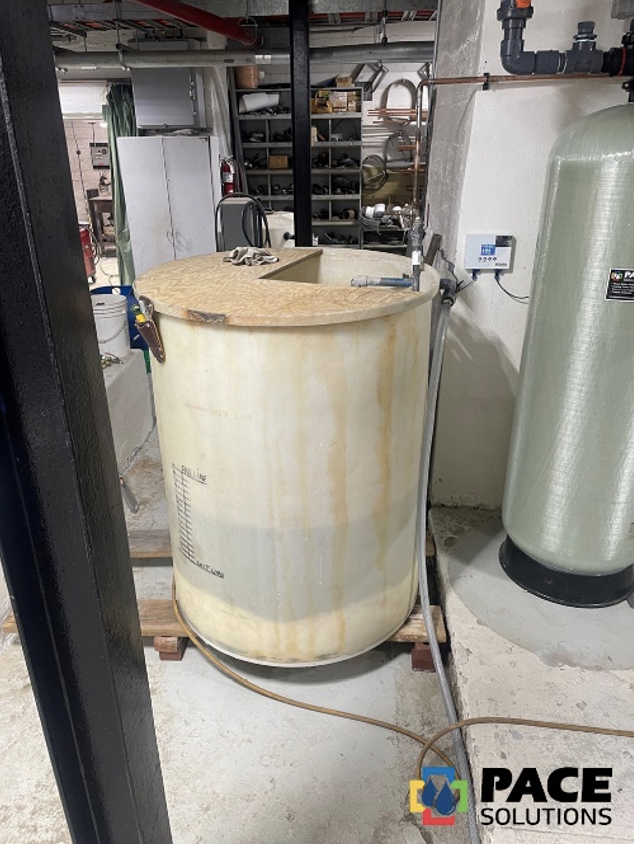
Regular care and maintenance, such as online and offline resin cleanings, can extend the life of a water softening system by up to 15 years. This means that water softener resins won’t last forever. Several other factors can contribute to the degradation or “death” of ion exchange resins, including contamination, fouling, physical breakdown, resin loss during backwash, excessive heat, and inadequate regeneration.
The resin system we are showing you today has died of old age. I would like to walk you through the process of replacing a water softener! In addition to being at the end of its life, the system is also oversized, so we won’t just replace the resin, but also the softener vessels and controls, replacing it with ones that are smaller and more efficient.
An entire water-softening system is extremely heavy and cannot be lifted by hand. In this instance, we were also extremely limited by tight spaces. We cut the vessels in half, inserted a rod, ensured it was well secured and safe, and then mechanically hoisted the vessel and resin away.
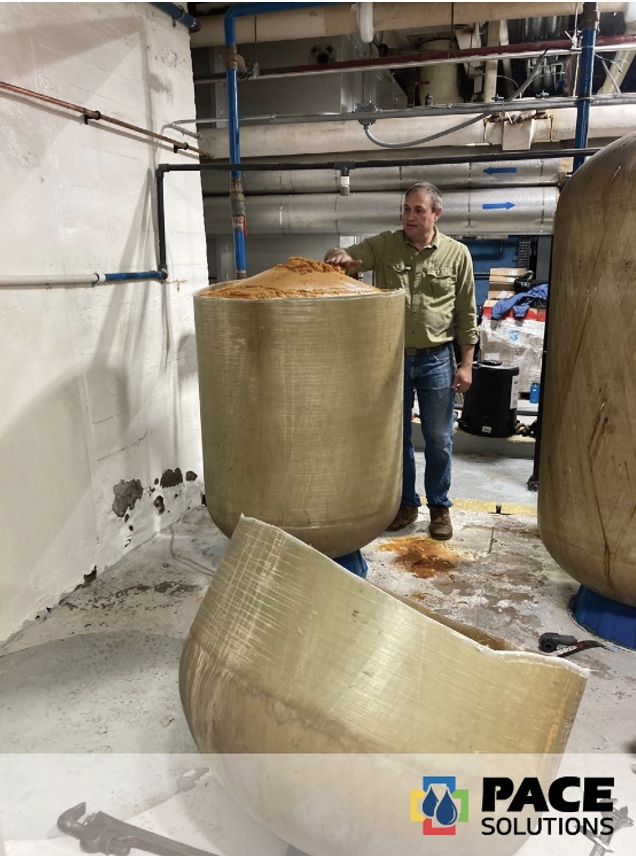
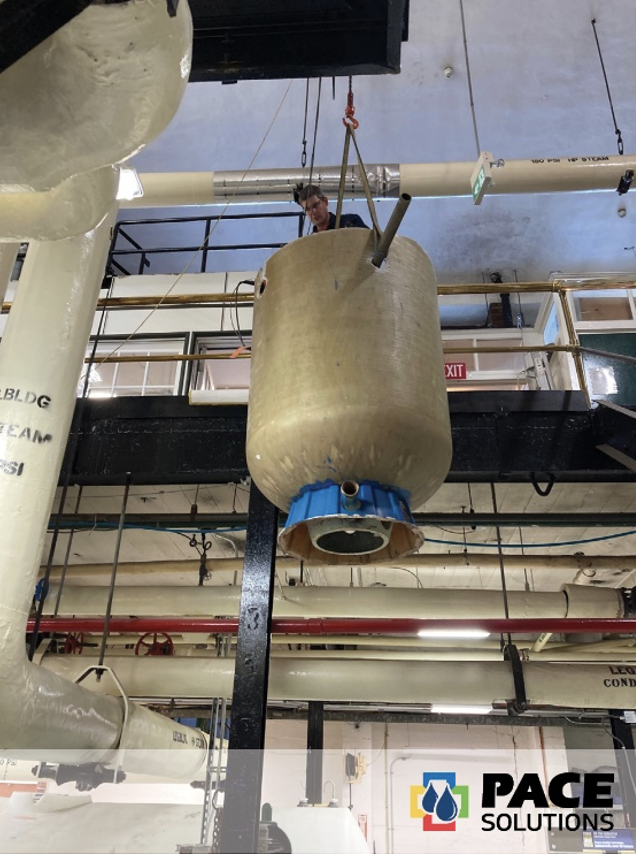
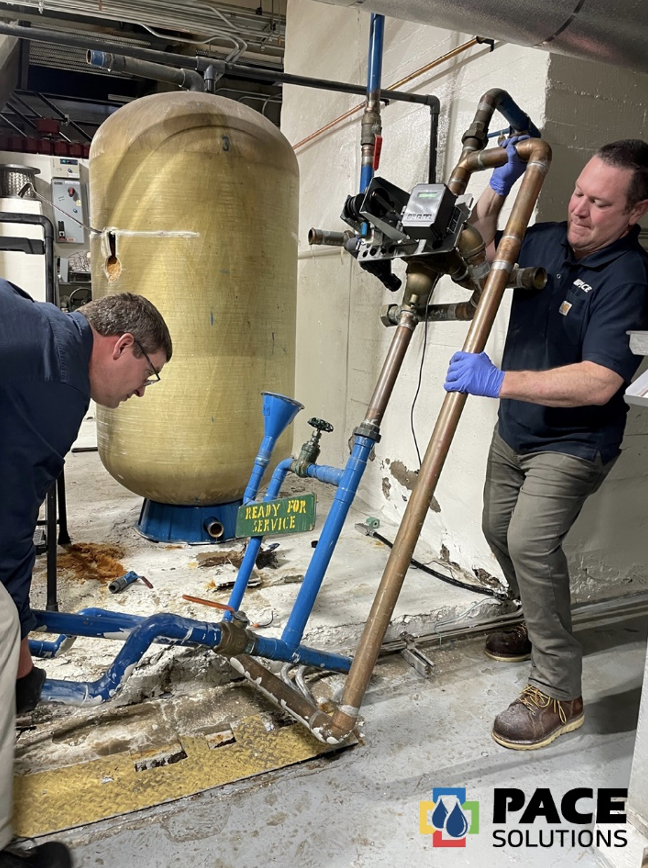
It’s time to remove some old piping now that the old system has been hoisted away.
New units are highly efficient and there will be a significant reduction in salt and water consumption during regeneration. It’s a smaller system that is more powerful.
Take home message: As new water/energy conservation innovations are applied to your system, replacement or retrofitting may be recommended to better meet your system’s needs.
Ask your Pace representative to review your current system and determine if you too can benefit from a more efficient water softening system.




